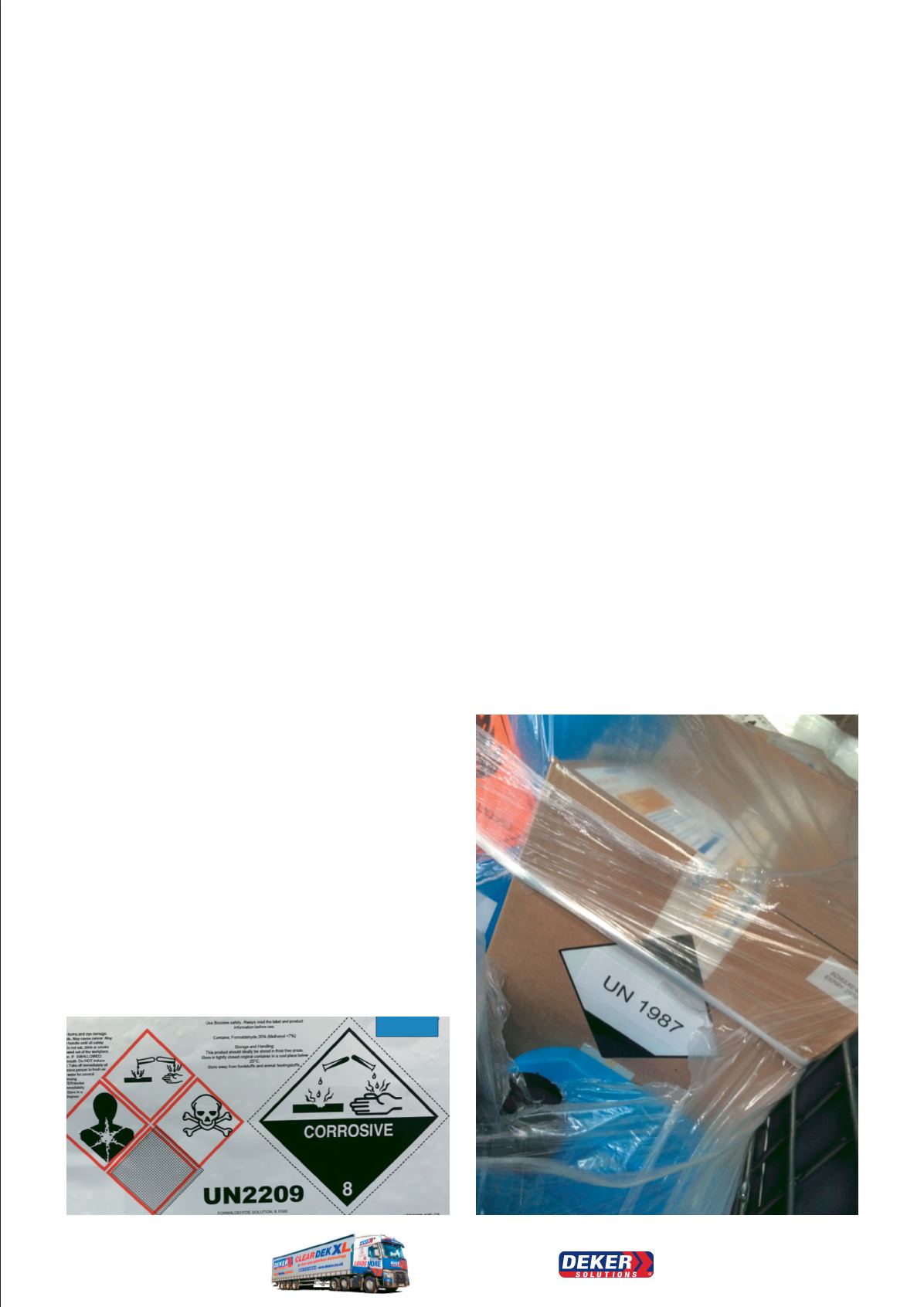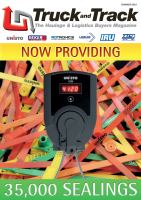
 www.truckandtrack.com
www.truckandtrack.com
Summer 2019
Truck and Track
51
DANGEROUS GOODS
format. For road, ADR applies, meaning the delivery note has to
have the following Dangerous good Information: -
Proper Shipping Name
[the product name] which can be specific
for the product, such as Toluene Diisocyanate; or can be a N.O.S.
[no other substance] i.e. a Generic such as ‘Paint or Paint related
Materials’ [UN 1263]. Note that a N.O.S. Number can only be used
if no specific UN Number is available for the product in question.
UN Number
[this is a four-digit number that references the
product]. The UN Number is used to refer/reference the product as
opposed to the Proper Shipping Name, to assist in the event of an
issue or emergency situation because many non-chemists cannot
pronounce some chemical names, especially if under a stressful
situation, such as a vehicle incident or leaker. An example
‘can you
pronounce Toluene Diisocyanate?
’ which many would struggle
with; however, using
‘UN 2078’
safely overcomes the problem.
Kemmler Class
– This is the Dangerous Goods Classification used
in Logistics
Class 1 – Explosive substances or articles
Class 2 – Gases
Class 3 – Flammable Liquids
Class 4.1 – Flammable Solids, Self-Reactive and De-sensitized
Explosives
Class 4.2 – Substances liable to spontaneously combust
Class 4.3 – Substances which, in contact with water, emit
flammable and/or toxic gas
Class 5.1 – Oxidizing Substances
Class 5.2 – Organic Peroxides
Class 6.1 – Toxic Materials
Class 6.2 – Biologically Infectious Substances
Class 7 – Radioactive
Class 8 – Corrosive
Class 9 – Miscellaneous dangerous substances and
Environmentally Hazardous
Packing Group [PG],
which references the Transport Category [TC]
and is a check in terms of relative hazard. PG 0 [mainly compressed
gases] are the most Hazardous, then in descending order of hazard
we have Packing Groups I, II, III with IV being non-ADR. An example
is a low flashpoint Class 3 product which will be of a lower packing
group to a high flash point product; an example being Acetone [UN
1090] which is packing group II as it has a flash point of -20Degrees
Celsius [and evaporates readily]; whereas Diesel Fuel which is UN
1202 [packing group III] as its flash point is nominally 60 Degrees
Celsius and has a much lower evaporation rate, hence a lower risk
than Acetone, and this is reflected in the assigned Packing Group.
Description of Goods
– this must denote package type [eg Drum,
Can, IBC, Cylinder, Big-Bag etc], package size, litres or kilogram,
total weight.
Tunnel Code
– all Dangerous Goods under ADR are rated A-E in
terms of what is allowed under European Road Tunnels, related to
the risk/hazard posed by the specific product.
These details above must be either written on the delivery note
[POD] or attached. Many consignors, who only have a small
proportion of their freight that is classed under ADR as Dangerous
Goods, often attach an IMDG Dangerous Goods Note [DGN] to
the delivery note/proof of delivery [aka POD], which is acceptable
as long as the dangerous goods information as detailed above is
complete.
The reasonwhy this information is documented is that, in the event
of an incident on a public highway, the emergency responders can
prepare the best plan of action to resolve the problem minimising
risks; as well as inspection by enforcers such as DVSA, Police, HSE on
road-side checks, ensuring regulatory compliance by the driver and
transport organisation.
ForRail Journeys
–documentationmust comply toRIDregulations
which sharemuchwith road regulations as detailed under ADR; but
which applies to rail journeys.
For Sea Journeys
– the International Maritime Dangerous
Goods Code applies [aka IMDG] and enforced by The Maritime
and Coastguard Agency [MCA]. The consignee [or agent/shipper]
must have a competent person completing the IMDG compliant
Dangerous Goods Note [DGN] which references the product.
The DGN is checked by the shipping line. Some products can
only be carried on cargo/freight vessels, while there are quotas
for some products which are allowed on passenger vessels. The
IMDG Dangerous Goods Code is similar to ADR but has additional
restrictions on what can be carried, and on what vessel, and which
route; because as troubling as is a leak or incident with dangerous
goods by road, the adage
‘worse things happen at sea’
is valid, hence
why shipping dangerous goods by sea is more restrictive and the
documentation is even more integral to the logistics process.
For Air Journeys
– the restrictions naturally for dangerous goods
moved by air are even stricter still - as defined by IATA [International
Airline Transport Association] and enforced in the UK by the CAA
[Civil Aviation Authority]. Many dangerous goods are prohibited
for air transport, or are restricted to cargo aircraft only. An IATA
approved Dangerous Goods Note [DGN] must be completed, and
this includes stricter packaging requirements, and the DGN for air,
must be completed by a competent person who has been trained
and certified in the Carriage of Dangerous Goods by Air and holds
valid certification.
TAILOR MADE
VEHICLE & TRAILER
SOLUTIONS
01543 420 121
www. deker .co.uk


















